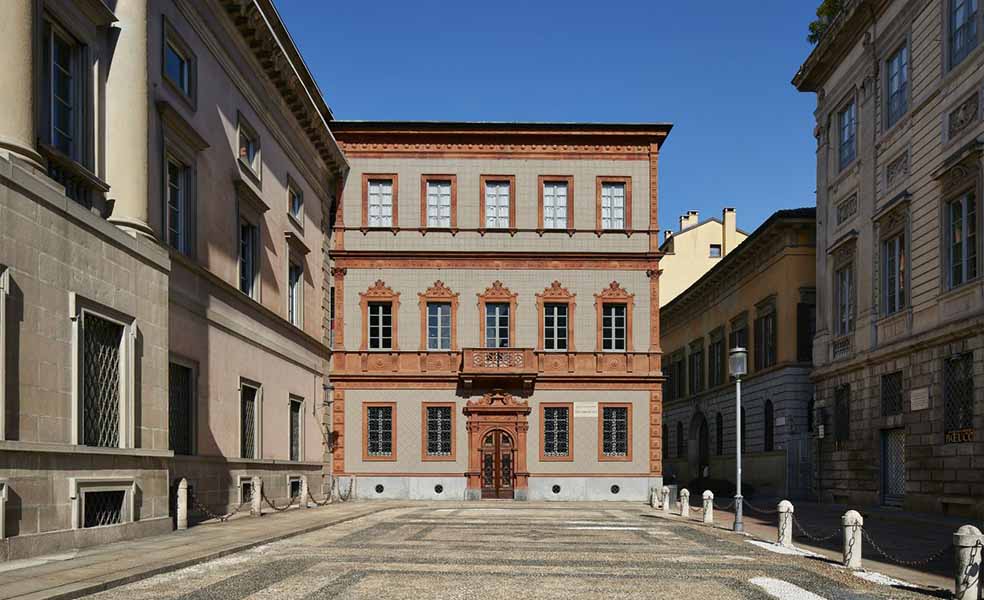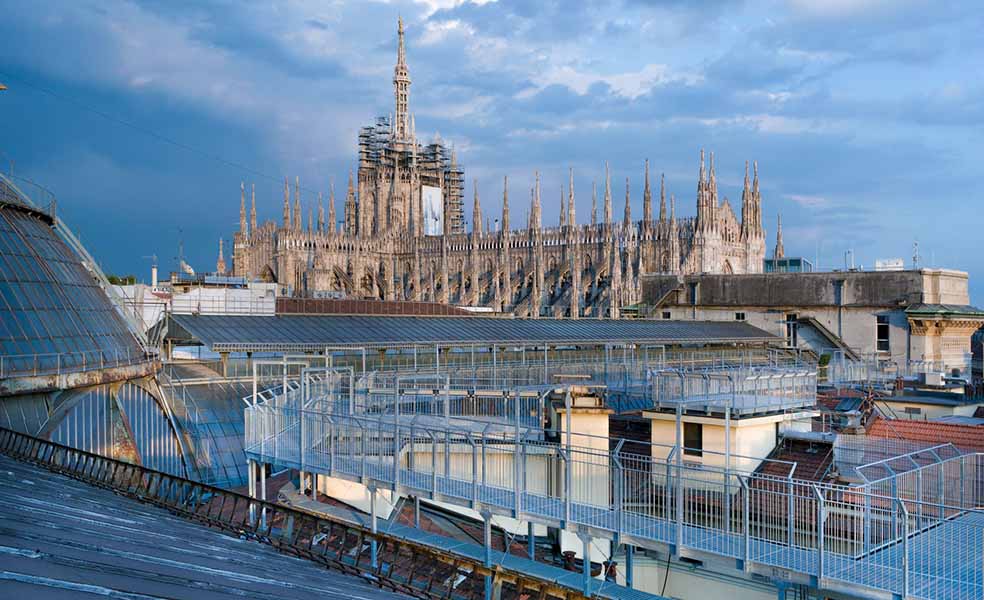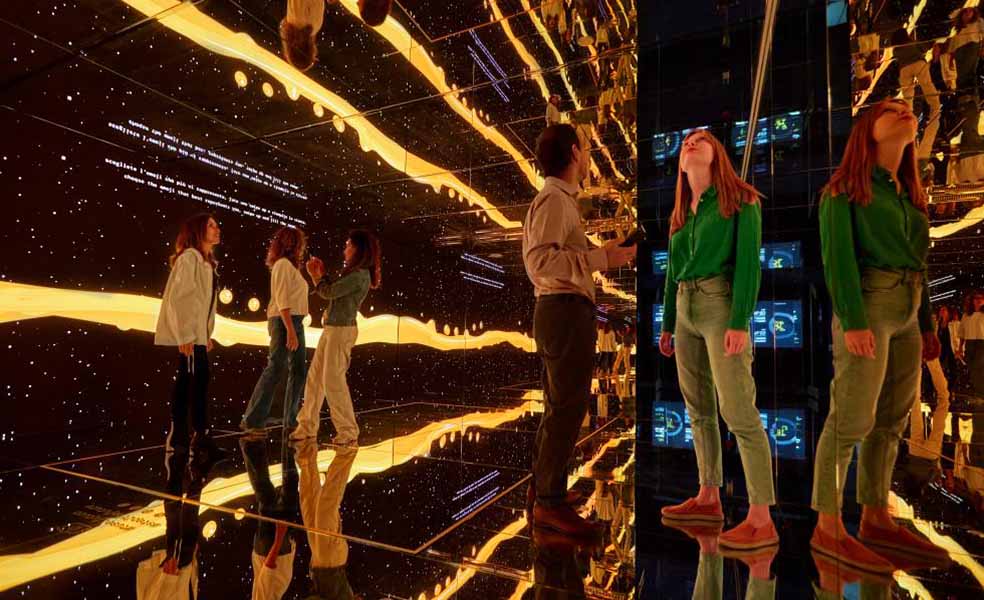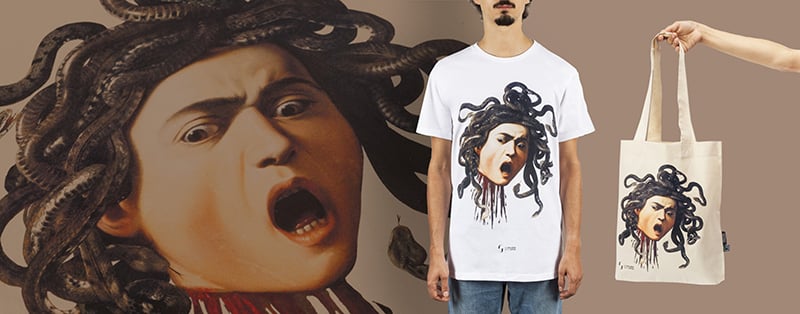Home / Museums / ADI Design Museum
ADI Design Museum
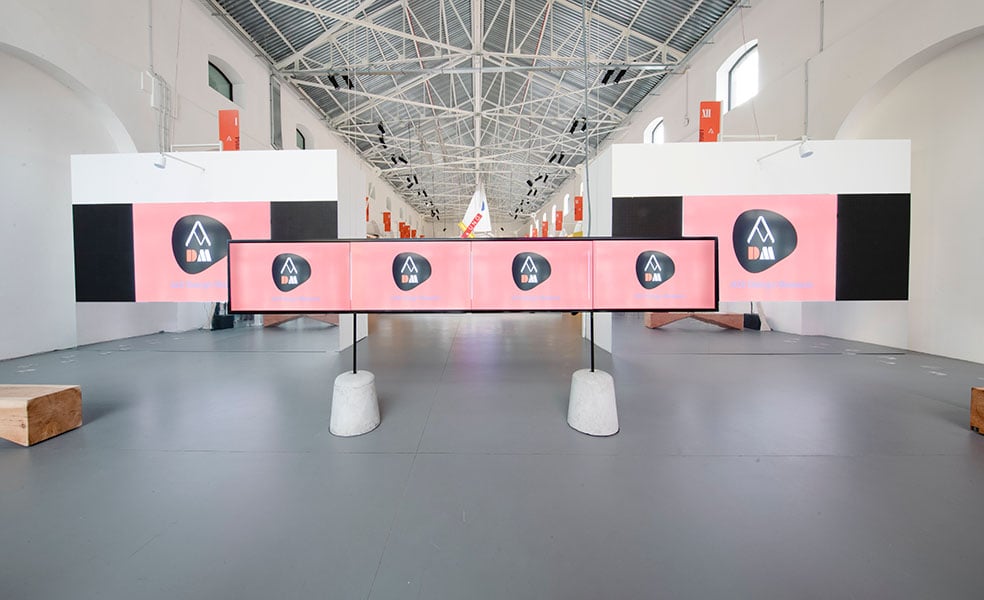
The history
Inaugurated in May 2021 in 5,000 square metres of exhibition space in the square of the same name, the ADI occupies the former industrial area in Milan between Via Ceresio and Via Bramante, a space that in the 1930s was a depot for horse-drawn trams and an electricity distribution plant.
The museum is managed by the Fondazione ADI Collezione Compasso d’Oro, established in 2001 by ADI – Associazione per il Disegno Industriale (an institution that promotes the Compasso d’Oro Award, the most prestigious international design award), in order to preserve and enhance what has been built up over the decades of the Award’s activities: a national cultural heritage, recognised by the Ministry of Culture as being of ‘exceptional artistic and historical interest’.
On the occasion of the opening of the Museum, a new logo, based on the one originally designed by Albe Steiner, was created by the Migliore+Servetto studio of architects in collaboration with graphic designer and architect Italo Lupi.
The collection
ADI Design Museum hosts the entire repertoire of the winning projects of the Compasso d’Oro Award, an award born in 1954 from an idea of Gio Ponti to valorise the quality of made-in-Italy design – today the oldest and most institutional recognition of the sector worldwide.
A dynamic museum, constantly evolving and destined to tell the story of Italian design in its industrial, economic, cultural and social, popular and research aspects. In addition to the Permanent Collection, the museum’s spaces host temporary exhibitions, spaces for business meetings, design lectures, workshops for children, as well as transversal initiatives and meetings for the general public – with the aim of contributing to the dissemination and enhancement of design culture on a national and international level. Also available to the public are a library, ADI headquarters and historical archive, a bookshop and a catering area.
Photo: ADI Design Museum, Milan
Temporary exhibitions
Compasso d’Oro International Award 2025
After its debut at the Italy Pavilion of Expo 2025 Osaka, the exhibition dedicated to the winning projects of the Compasso d’Oro International Award 2025 arrives at the ADI Design Museum.
The selection includes 20 Compasso d’Oro awards and 35 Honourable Mentions, assigned to projects from around the world that interpreted the Universal Exposition theme “Designing Future Society for Our Lives” through innovative solutions for the society of the future.
The projects on display highlight the main directions of contemporary design: a focus on well-being and health, the development of materials and processes oriented toward sustainability, the use of technology as a tool for inclusion and for improving the quality of spaces, a dialogue between tradition and innovation, and the exploration of forms of empathy and storytelling through objects.
Promoted by ADI – Associazione per il Disegno Industriale, in collaboration with the General Commissioner for Italy at Expo 2025 Osaka.
Visit information
- December 9, 2025 – January 6, 2026
- Admission included in the museum ticket
OLTREPLASTICA
OLTREPLASTICA is an exhibition that describes the metamorphosis of plastic and the contribution of design in redefining its meanings and possibilities.
Through objects, materials, and pioneering processes, the narrative highlights how scientific research, industry, and design culture are guiding plastic beyond its fossil origin, toward more conscious and responsible scenarios.
What emerges is a narrative that presents design as an evolutionary practice—capable not only of redefining aesthetic languages but also of envisioning a future in which conventional plastic becomes something altogether different, thanks to the establishment of new environmental, technical, and cultural standards.
The exhibition is curated by Frida Doveil and organized by the ADI Design Museum with the support of Eni, Main Partner.
Visit information
- December 6, 2025 – January 15, 2026
- Admission included in the museum ticket
BMW Art Car World Tour
The BMW Art Car World Tour exhibition presents a selection of eight iconic vehicles from the BMW Art Car Collection, marking the project’s fiftieth anniversary. The showcase brings together models created by international artists such as Alexander Calder, Frank Stella, Roy Lichtenstein, Esther Mahlangu, Sandro Chia, Jenny Holzer, Jeff Koons, and Julie Mehretu, offering an overview of the evolution of the series from 1975 to 2024.
Visit information
- December 4, 2025 – January 8, 2026
- Admission included in the museum ticket
ALCHIMIA
Alchimia. The Revolution of Italian Design, the first complete retrospective dedicated to the Milanese collective founded by Alessandro and Adriana Guerriero in 1976 and active until 1992.
After its inaugural showing at the Bröhan Museum in Berlin (April–September 2025), curated by François Burkhardtand Tobias Hoffmann, the exhibition arrives in the city where the Studio Alchimia experience was born, in a reimagined and expanded version featuring an entirely new display concept designed by Alessandro Guerriero himself. Conceived as a poetic and visionary device, it invites visitors to step onto the “tappetozattera” (“carpet-raft”), as Guerriero calls it—a symbolic structure that suspends the everyday and immerses the audience in the utopian and experimental spirit that made Alchimia a singular phenomenon in the landscape of Italian design.
Emerging in a period of profound social and cultural change, Alchimia became a workshop of freedom and cross-pollination where design, architecture, visual arts, fashion, music, and performance intertwined to shape a new, ironic, and poetic language.
Through the theory of “banal design,” the group overturned the rules of functionalism and industrial aesthetics, restoring to design its narrative, symbolic, and interpretative power.
The exhibition features over 150 works, including objects, furniture, sketches, photographs, paintings, and videos, retracing the collective’s history and its lasting impact on contemporary visual culture.
The retrospective is accompanied by a 400-page trilingual catalogue, edited by François Burkhardt and Tobias Hoffmann, co-published by the Bröhan Museum and the ADI Design Museum.
The exhibition is held under the joint patronage of German Federal President Frank-Walter Steinmeier and President of the Italian Republic Sergio Mattarella.
Exhibition Sponsors: Poste Italiane, Istituto per il Credito Sportivo e Culturale, Abet Laminati
Visit information
- November 11, 2025 – January 22, 2026
- Admission included in the museum ticket
Monday to Sunday from 10.30 am to 8 pm.
Last admission 7:15 pm.
Friday
2 hours
Temporary exhibitions included in the ticket price
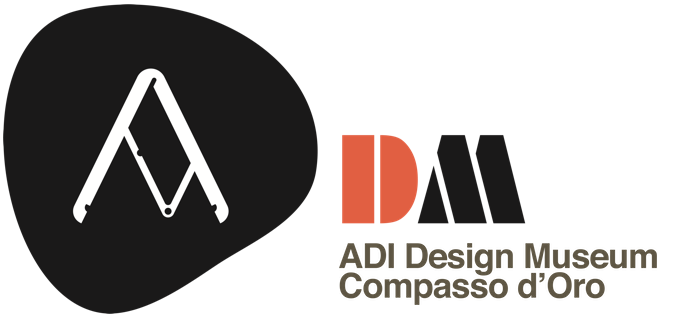
Books and guides
No products were found matching your selection.
Merchandise
No products were found matching your selection.
Related museums
From €8,00
Casa Manzoni is a historic palace in Milan, located at 1 Via Morone, famous for being the home of writer Alessandro Manzoni from 1814 until his death.
The museum itinerary, set up by Michele De Lucchi, offers a tour of Casa Manzoni in ten sections, which trace, through the furnishings and works of art displayed in the rooms, different itineraries in the writer’s life and work.
Average visit time:
1-2 hours
From €16,50
The SKYWALK, located on the historic iron walkways used for the maintenance of the Galleria Vittorio Emanuele II and inaugurated on the occasion of Expo 2015, is an extraordinary opportunity to admire the Galleria from above. Walking between the glass and metal of the Galleria, you can immerse yourself in the history and curiosities of Giuseppe Mengoni’s masterpiece, enjoying a never-before-seen perspective to appreciate its most iconic architectural details. The SKYWALK invites you to enjoy an experience suspended in time, where the frenetic pace of Milan continues to flow beneath you.
Average visit time:
1 hour
From €10,00
STEP FuturAbility District is a technological, popularizing, and experiential space created to explore and make people understand the potential of digital transformation. Among dynamic installations, immersive spaces and multimedia walls, it is Forward, a virtual creature, that guides the itinerary.
From artificial intelligence to the Internet of Things, from cloud computing to 5G, visitors are guided to understand how these innovations are changing everyday life and are set to transform skills and professions to address the future of the world of work.
Average visit time:
1-2 hours


